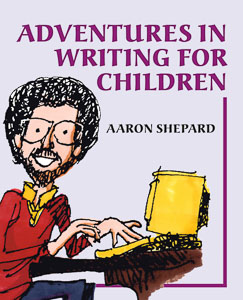Though written during a very different time in the children’s book business, this article still holds interest for the light it casts on conditions today.—Aaron
All around us, we hear heralded the phenomenal growth of the children’s book industry and the wonderful opportunities this affords. But this incredible growth may ultimately work against children’s book writers—and children’s books themselves.
Let’s look at an analogy with the field of urban development. It used to be an unchallenged assumption that cities should grow. Attracting industry meant that jobs would be created, decreasing unemployment. And, as population increased, the tax base would expand, so more services could be provided.
This turned out to be false reasoning. New industry created jobs, but more people came to take those jobs. And increased population expanded the tax base, but the extra taxes collected went for services to the new residents. Meanwhile, quality of life degenerated.
In a similar way, the growth of the children’s book industry creates more opportunities for writers. But, as word of those opportunities spread, more writers arrive to take advantage of them. In the end, there may be a greater glut of children’s writers than ever.
But there is an even greater danger from this rapid growth: the commercialization of children’s books.
Let’s look at another analogy, this time with the field of rock music. In the 1960s, there was a movement of creative rock known as “underground,” largely associated with the San Francisco music scene. Nearly commercial-free “underground” FM radio stations sprang up around the country. This movement brought rock music to an unparalleled level of artistic expression.
The problem came when the music grew too popular. When it became obvious that this music could make lots of money, it was bought up. And, when it was bought up, it in effect disappeared.
When big money moves in, creativity, originality, and freedom move out. The reason is risk. When a lot of money is at stake, the investors insist on a safe product. And they get what they want. Formulas reign. Products are geared to the mass market—meaning, the lowest common denominator.
As rock musician David Crosby pointed out, “The only thing you can be consistently is mediocre.”
We have already seen this process in the adult book industry. The only likely way to make a living in adult fiction today is genre writing—science fiction, romance, Westerns, and such. A serious novelist finds it harder than ever to be published.
Now let’s turn to children’s book publishing. Here we find great growth, but much of it in series and “packaged” books. And we writers are subtly and not so subtly encouraged to write “down”—to make our writing accessible to the widest range of reading skills and the most common sensibilities. It seems the more literate and sophisticated children must fend for themselves. They can always turn to the classics.
Really, children’s books more and more resemble network TV. Of course, there is still quality programming—“specials”—but it is gradually being overwhelmed in the marketplace and in the child’s mind by series schlock and other types of formula production. For those who like schlock, that’s fine. But other kids will wind up with schlock simply because that’s what’s most available. And the youngest kids can’t tell the difference until it’s too late.
Compare TV news with the new breed of children’s nonfiction book. We are now advised that all such books should be brief and profusely illustrated. These are the same restrictions that force TV news to be shallow. The fact is, some of the most important things we can tell children are hard or impossible to illustrate. We seem to be deciding that these things will not be said through nonfiction.
Bigger is not always better. With the growth of the industry, it falls to the real lovers of children’s books to slow the gradual slide of the industry into the practices of commercial culture. We can only do this by staying focused on quality. There will always be others to worry about quantity.
